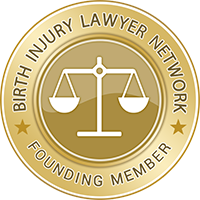Brachial Plexus Palsy
The brachial plexus is a network of nerves located near the neck and provides movement and feeling to the arm, hand and fingers. Injury such as overstretching of these nerves is called brachial plexus palsy. It is characterized by loss of movement or weakness of the arm. The injury is most often caused by a difficult delivery wherein the infant's head and neck are pulled towards the side as the shoulders pass through the birth canal; or the pulling of the infant's shoulder during a head-first delivery; or the pressure applied on the baby's raised arms during a breech delivery.
Signs manifested by a baby with brachial plexus palsy are holding its arm turned in at the shoulder; and its elbow is straight, wrist bent with the hand fisted and turned backward. In most cases the baby can open their hand and straighten their wrist but they cannot move their shoulder or bend their elbow. Symptomatically, the feeling in their arm and hand is normal unlike in severe cases wherein there is less or no feeling at all. Also in severe cases or what is called having a complete brachial plexus palsy, the baby's arm will hang limply on its side with the hand open and the baby may also have a droopy eyelid on the injured side. Mild stretching of the nerves will likely heal in time while severely stretched nerves may lead to compromised motion, decreased sensation and atrophy.
The mother and the baby both contribute to the risk factors that can lead to the condition. Among the risk factors are the mother gaining excessive weight during her pregnancy; the mother having diabetes, either preexisting or gestational; abnormal position of the baby such as being in breech position; abnormal shape of the mother's uterus; a large baby; a baby with wide shoulders or a baby with a stiff neck which makes it difficult for its head to engage into the birth canal. Delivering a baby with the assistance of a forcep will also put the baby at risk of brachial plexus palsy. Other risks are multiparity, second stage of labor that lasts more than 60 minutes, previous child with obstetrical brachial plexus palsy, and shoulder dystocia.
There are several types of brachial plexus palsy based on the number of nerves involved and the degree to which each level is injured. The brachial plexus consists of nerves from cervical vertebra 5 (C5)-thoracic vertebra 1 (T1). C5 and C6 join to form the upper trunk, C7 travels alone as the middle trunk, and C8-T1 join as the lower trunk. Each trunk divides into anterior and posterior divisions to create the cords, which then subdivide further into branches that supply the muscles of the arm. The basic types of brachial plexus palsy then are :
- Erb's palsy – involves or affects nerves arising from C5 and C6
- Upper-middle trunk brachial plexus palsy - involves nerve fibers from C5, C6, and C7 levels
- Klumpke palsy - results in deficits at levels C8 and T1
- Total brachial plexus palsy - affects nerves at all levels (C5-T1)
- Bilateral brachial plexus palsy - demonstrates bilateral involvement
Once a baby is diagnosed to have brachial plexus palsy, he or she will immediately be recommended for physical and occupational therapy. The outcome of these therapies will determine whether the baby will need to undergo surgery.
Find an Experienced Birth Injury Attorney in your Local Community
 Find A Lawyer in Columbus, OH
Find A Lawyer in Ohio
Find A Lawyer in Any State
Find A Lawyer in Columbus, OH
Find A Lawyer in Ohio
Find A Lawyer in Any State
